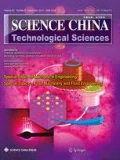Abstract
Since the filling of the reservoir of the Three Gorges Project (TGP) dam in the Yangtze River in 2003, erosion downstream from the dam site has affected the finless porpoise’s habitat. In this study, a one-dimensional (1D) fluvial process mathematical model is used to calculate flow and sediment transport in the middle and lower reaches of the Yangtze River, including the finless porpoise’s habitat. By analyzing the calculation results for the water resources, suspended load, and bed materials in the finless porpoise’s habitat after the riverbed deformation, we evaluated the possible impact on this rare Yangtze River aquatic animal. The results show that, with the erosion of riverbed over the next 20 years, the water quantity comprising the habitat will decrease to half of its present amount, and the bed materials will be eroded to coarse grading, such that the reserve will become a gradually disappearing stream. Effective engineering measures should be used to decrease the erosion in the main channel, in case the overall erosion cannot be stemmed and controlled, to ensure an adequate water volume flows into the finless porpoise’s habitat.
Similar content being viewed by others
References
Baillie J, Groombridge B, Barden A, et al. IUCN Red List of Threatened Animals. Switzerland: IUCN, Cland, 1996
Zhao X J, Barlow J, Taylor B L, et al. Abundance and conservation status of the Yangtze finless porpoise in the Yangtze River, China. Biol Conserv, 2008, 141: 3006–3018
Fang H W, Wang G Q. Three-dimensional mathematical model of suspended sediment transport. J Hydraul Eng ASCE, 2000, 126: 578–592
Fang H W, Rodi W. Three-dimensional calculations of flow and suspended sediment transport in the neighborhood of the dam for the Three Gorges Project (TGP) reservoir in the Yangtze River. J Hydraul Res, 2003, 41: 379–394
Friedman J M, Osterkamp W R, Scott M L, et al. Downstream effects of dams on channel geometry and bottomland vegetation: regional patterns in the great plains. Wetlands, 1998, 18: 619–633
Brandt S A. Classification of geomorphological effects downstream of dams. Catena, 2000, 40: 375–401
Fang H W, Chen M H, Chen Z H, et al. Effects of sediment particle morphology on adsorption of phosphorus elements. Int J Sed Res, 2013, 28: 246–253
Joliff I B. Computation of dynamic waves in channel networks. J Hydraul Eng ASCE, 1984, 110: 1358–1370
Chudnry M H, Schulte A M. Computation of steady-state, gradually varied flows in parallel channels. Can J Civ Eng, 1986, 13: 39–45
Choi G W, Molinas A. Simultaneous solution algorithm for channel network modeling. Water Resour Res, 1993, 29: 321–328
Sen D J, Garg N K. Efficient algorithm for gradually varied flows in channel networks. J Irrig Drain Eng, 2002, 128: 351–357
Cao Z X, Li Y, Yue Z. Multiple time scales of alluvial rivers carrying suspended sediment and their implications for mathematical modeling. Adv Water Res, 2007, 30: 715–729
Liu Q Q. Sediment carrying capacity of circulating flow. Int J Sed Res, 1999, 13: 45–51
Han Q W. A study of the non-equilibrium transportation of a non-uniform suspended load. Chin Sci Bull, 1979, 24: 804–808
Vanniekerk A, Vogel K R, Slingerland R L, et al. Routing of heterogeneous sediments over movable bed-model development. J Hydraul Eng ASCE, 1992, 118: 246–262
Bell R G, Sutherland A J. Non-equilibrium bed load transport by steady flows. J Hydraul Eng ASCE, 1983, 109: 351–367
Armanini A, Disilvio G. A one-dimensional model for the transport of a sediment mixture in non-equilibrium conditions. J Hydraul Res, 1988, 26: 275–292
Zhong D Y, Wang G Q, Zhang L. A bed-load function based on kinetic theory. Int J Sed Res, 2012, 27: 460–472
Fang H W, Chen M H, Chen Q H. One-dimensional numerical simulation of non-uniform sediment transport under unsteady flows. Int J Sed Res, 2008, 23: 316–328
Gong Z, Zhang G K, Zuo C B, et al. Sediment transport following water transfer from Yangtzi River to Taihu Basin. Water Sci Eng, 2011, 4: 431–444
Yangtze River Scientific Research Institute (YRSRI). Computational Analysis of the Reach from Yi-Chang to Da-Tong Downstream the Three Gorges Project (in Chinese). Beijing: Intellectual Property Press, 2002. 258–311
China Institute of Water Resources and Hydropower Research (CIWHR). Research on Riverbed Erosion Process Downstream the Three Gorges Project (in Chinese). Beijing: Intellectual Property Press, 2002. 149–210
Yuan J, Xu Q X, Tong H. Report on River Bed Deformation and Bed Materials Distribution from Yi-Chang to Hu-Kou in 2008 (in Chinese). Wuhan: The Yangtze River Hydrology Bureau, 2009
Changjiang Water Resources Commission. Report on Preventing of Flood for Middle and Lower Reach of the Yangtze River after TGP Operation (in Chinese), 2010
Hydrology Bureau. Report on River Bed Deformation of Middle and Lower Reach of the Yangtze River after TGP Operation (in Chinese). 2009
Fang, H W, Han D, He G J, et al. Flood management selections for the Yangtze River midstream after the Three Gorges Project operation. J Hydro, 2012, 432: 1–11
Qian N, Zhang R, Zhou Z D. River Fluvial Process. Beijing: Science Press, 1989
Author information
Authors and Affiliations
Corresponding author
Rights and permissions
About this article
Cite this article
Fang, H., He, G., Han, D. et al. Fluvial processes and their impact on the finless porpoise’s habitat after the Three Gorges Project became operational. Sci. China Technol. Sci. 57, 1020–1029 (2014). https://doi.org/10.1007/s11431-014-5495-3
Received:
Accepted:
Published:
Issue Date:
DOI: https://doi.org/10.1007/s11431-014-5495-3




